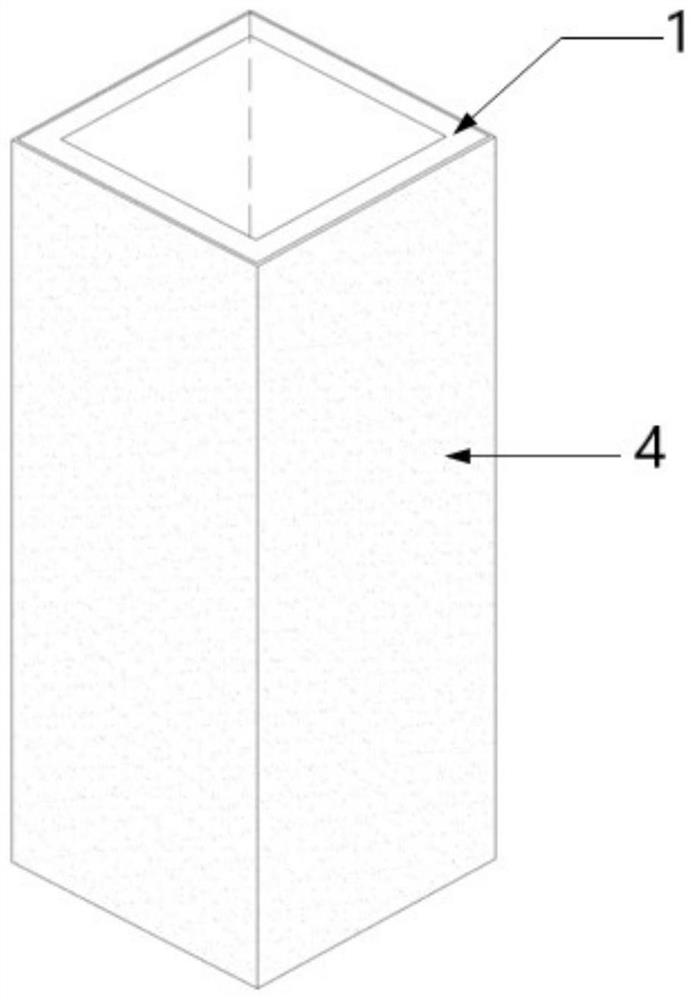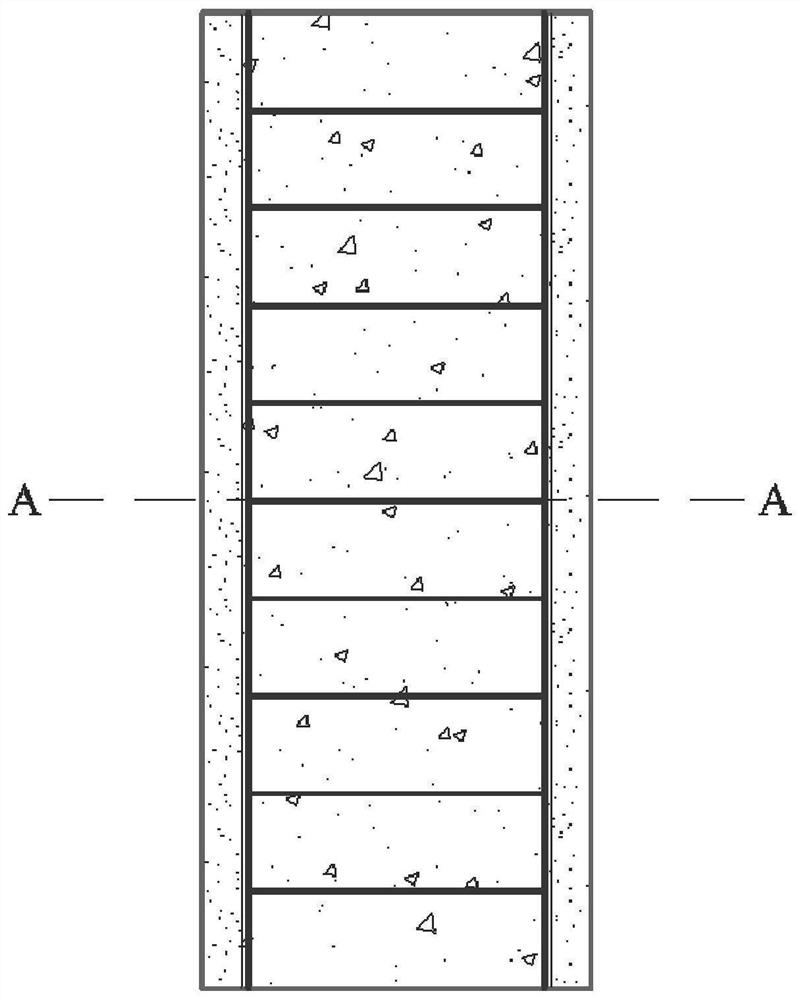Concrete based on 3D printing, preparation method thereof and 3D printing column template
A 3D printing and concrete technology, applied in the field of construction engineering, can solve the problems of waste of materials, high labor cost, and high sample cracking rate.
- Summary
- Abstract
- Description
- Claims
- Application Information
AI Technical Summary
Problems solved by technology
Method used
Image
Examples
Embodiment 1
[0082] A concrete based on 3D printing, which is prepared from the following raw materials in parts by mass: 80 parts of ordinary Portland cement; 10 parts of silica fume; 4 parts of fast-setting rapid-hardening sulphoaluminate cement; 60 parts of quartz sand , the maximum particle size is 0.21mm; 30 parts of water; 1 part of water reducing agent; 1 part of expansion agent; 0.4 parts of defoaming agent; 0.02 parts of air-entraining agent; .
[0083] The ordinary Portland cement is a hydraulic cementitious material made of Portland cement clinker, 5%-20% mixed materials and an appropriate amount of gypsum;
[0084] The water reducing agent adopts a polycarboxylate high-performance water reducing agent with a water reducing rate greater than 25%; the cellulose uses sodium carboxymethyl cellulose;
[0085] The expansion agent is concrete expansion agent.
[0086] The preparation method of described concrete based on 3D printing comprises the following steps:
[0087] A. Weigh ...
Embodiment 2
[0093] A concrete based on 3D printing, which is prepared from the following raw materials in parts by mass: 100 parts of ordinary Portland cement; 12 parts of silica fume; 5 parts of fast-setting rapid-hardening sulfoaluminate cement; 70 parts of quartz sand , the maximum particle size is 0.21mm; 40 parts of water; 1.3 parts of water reducing agent; 1.4 parts of expansion agent; 0.5 parts of defoaming agent; 0.03 parts of air-entraining agent; .
[0094] The ordinary Portland cement is a hydraulic cementitious material made of Portland cement clinker, 5%-20% mixed materials and an appropriate amount of gypsum;
[0095] The water reducing agent adopts a polycarboxylate high-performance water reducing agent with a water reducing rate greater than 25%; the cellulose uses sodium carboxymethyl cellulose;
[0096] The expansion agent is concrete expansion agent.
[0097] The preparation method of described concrete based on 3D printing comprises the following steps:
[0098] A. ...
Embodiment 3
[0104] A concrete based on 3D printing, which is prepared from the following raw materials in parts by mass: 110 parts of ordinary Portland cement; 13 parts of silica fume; 6 parts of fast-setting rapid-hardening sulfoaluminate cement; 80 parts of quartz sand , the maximum particle size is 0.21mm; 45 parts of water; 1.5 parts of water reducing agent; 1.8 parts of expansion agent; 0.55 parts of defoaming agent; .
[0105] The ordinary Portland cement is a hydraulic cementitious material made of Portland cement clinker, 5%-20% mixed materials and an appropriate amount of gypsum;
[0106] The water reducing agent adopts a polycarboxylate high-performance water reducing agent with a water reducing rate greater than 25%; the cellulose uses sodium carboxymethyl cellulose;
[0107] The expansion agent is concrete expansion agent.
[0108] The preparation method of described concrete based on 3D printing comprises the following steps:
[0109] A. Weigh each raw material according t...
PUM
| Property | Measurement | Unit |
|---|---|---|
| compressive strength | aaaaa | aaaaa |
| tensile strength | aaaaa | aaaaa |
| elastic modulus | aaaaa | aaaaa |
Abstract
Description
Claims
Application Information
 Login to View More
Login to View More - R&D
- Intellectual Property
- Life Sciences
- Materials
- Tech Scout
- Unparalleled Data Quality
- Higher Quality Content
- 60% Fewer Hallucinations
Browse by: Latest US Patents, China's latest patents, Technical Efficacy Thesaurus, Application Domain, Technology Topic, Popular Technical Reports.
© 2025 PatSnap. All rights reserved.Legal|Privacy policy|Modern Slavery Act Transparency Statement|Sitemap|About US| Contact US: help@patsnap.com



